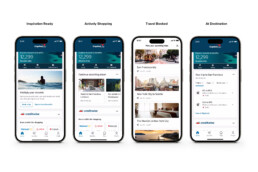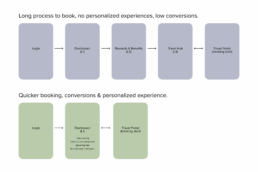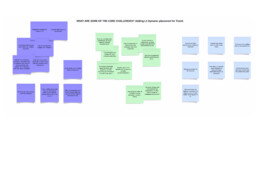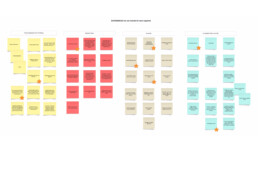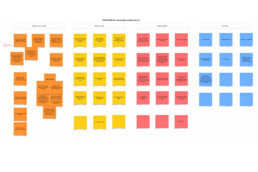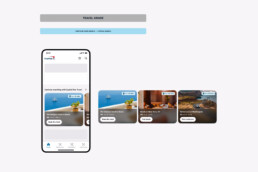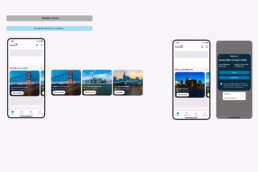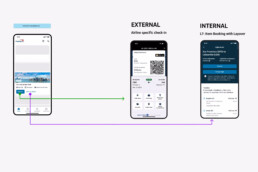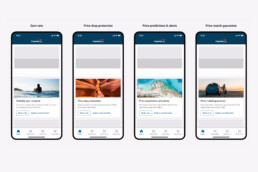The Opportunity
Capital One’s travel experience was previously buried several layers deep in the app, making it hard for users to discover, return to, or build upon their travel activity. This friction limited repeat engagement and under-leveraged key booking tools.
We needed to design a surface-level entry that:
-
Adapted to each customer’s journey phase
-
Encouraged first-time travel bookings
-
Surfaced relevant content based on recent searches or trips
-
Scaled across diverse card tiers and platform constraints
The Approach
We aligned the experience to distinct travel journey phases, allowing content to dynamically shift based on where the customer was:
-
Travel Booked – Highlight upcoming trips and support planning
-
Actively Shopping – Display cross-sells based on partially booked trips
-
In Transit – Show flight and check-in details for same-day travel
-
At Destination – Support context-aware content like local perks and hotel info
-
Inspiration Ready – (Deprioritized for MVP) Saved content and aspirational planning
We also incorporated card type logic, showing different layouts, offers, and perks based on eligibility.
Key Experience Features
-
Continue Your Search
Re-surfaced recent travel searches—including hotels, flights, rentals, and experiences—allowing users to resume bookings effortlessly. -
Itinerary Integration
Surfaced trip details on the home screen, using prior itinerary work to show contextual information like boarding times, destinations, or hotel check-ins. -
Cross-Sell by Journey Phase
Recommended services like car rentals, lounges, or premium stays based on gaps in a user’s itinerary, increasing booking completion rates. -
First-Time Booking Nudges
For users with no active trips, we displayed personalized value props—like miles earn rates, limited-time travel offers, and cardholder-exclusive perks—to drive initial engagement. -
Composable System Design
Used Apex Composer to enable modular content insertion and layout flexibility across multiple cards and platforms.
Results & Impact
-
3M+ daily travel impressions during partial rollout
-
57K daily sessions engaging with itinerary modules on iOS
-
13.4% average CTR on dynamic travel components
-
Increased cross-booking activity from integrated recommendations
-
Scalable framework reused for other app surfaces (e.g. Dining, Rewards)
Key Takeaways
-
Personalization needs to be timed and context-aware, especially in complex ecosystems
-
Scalable, composable modules unlock cross-platform delivery and reduced design debt
-
First-time travel engagement requires clear value communication, not just feature access
-
Surface-level access to travel content helps build trust and long-term cardholder loyalty


